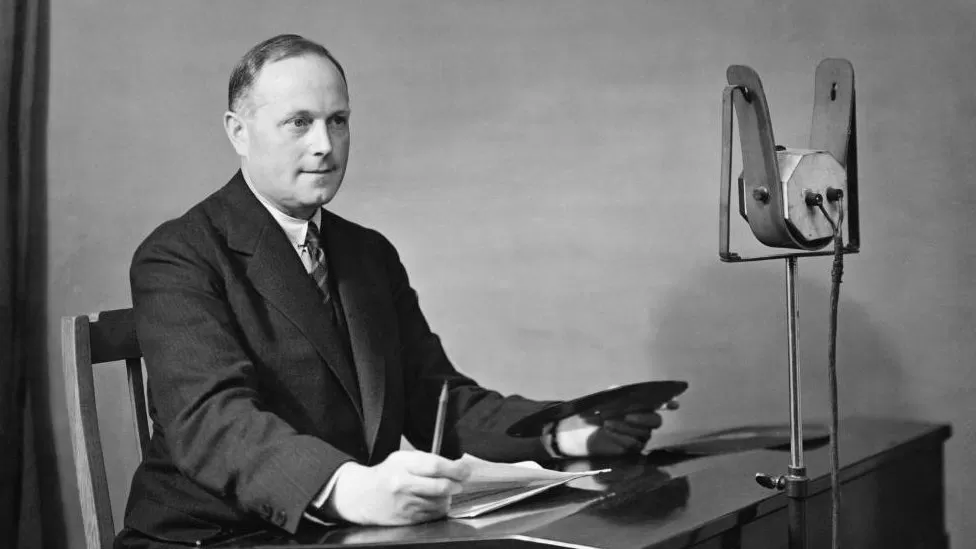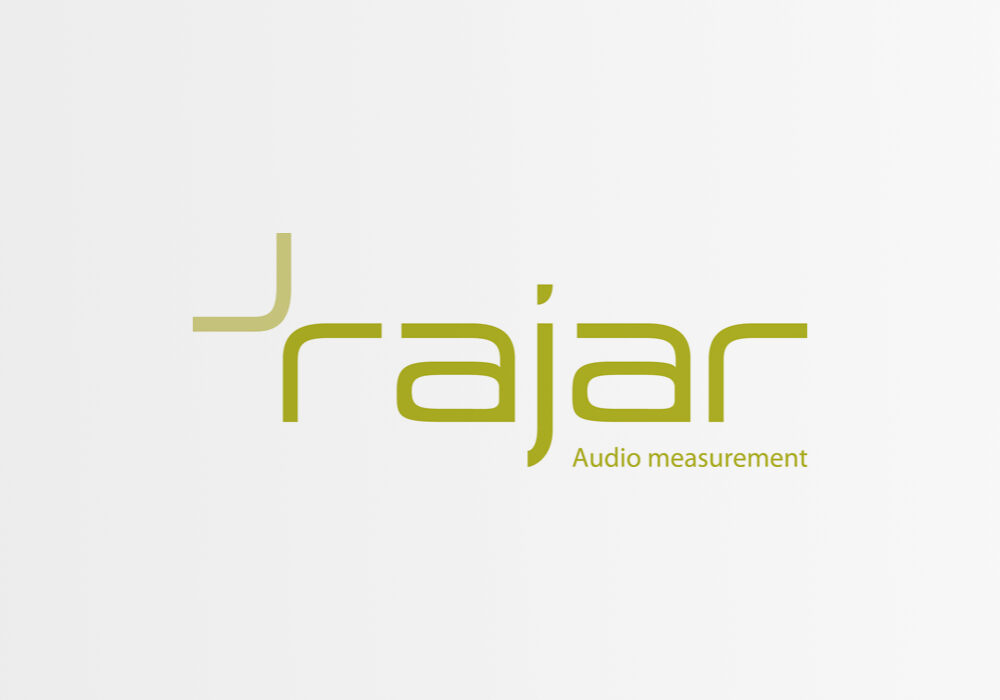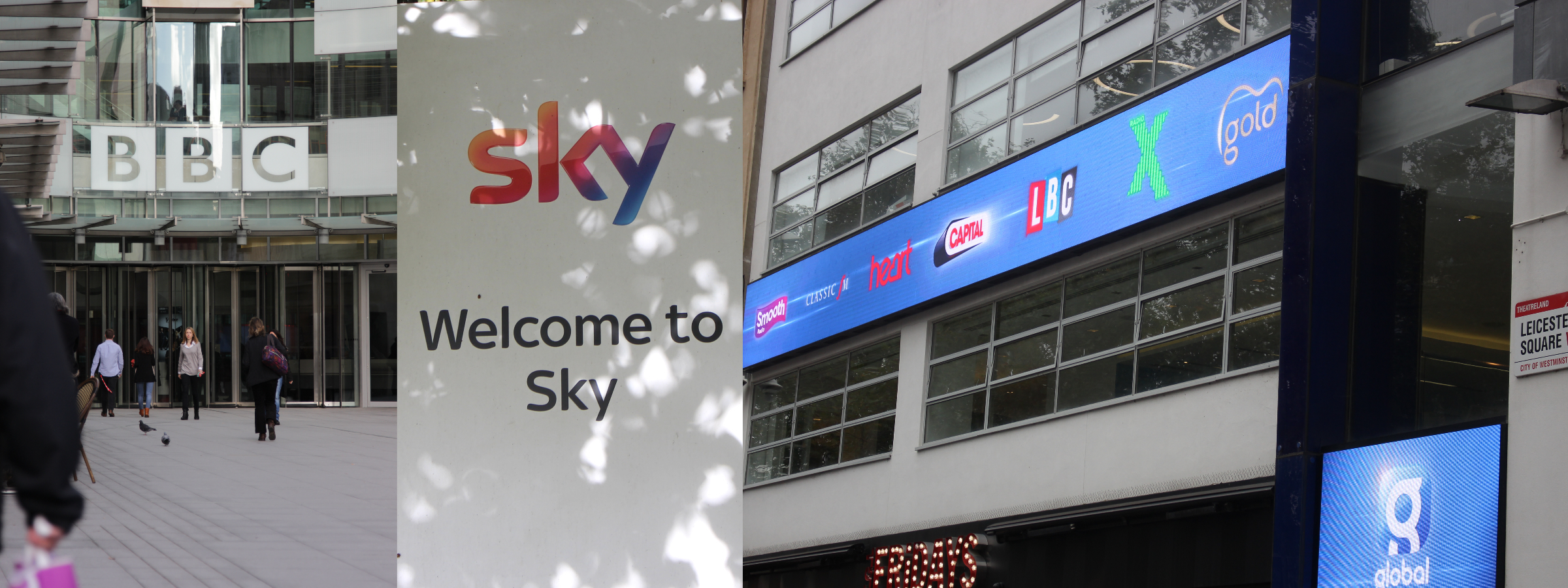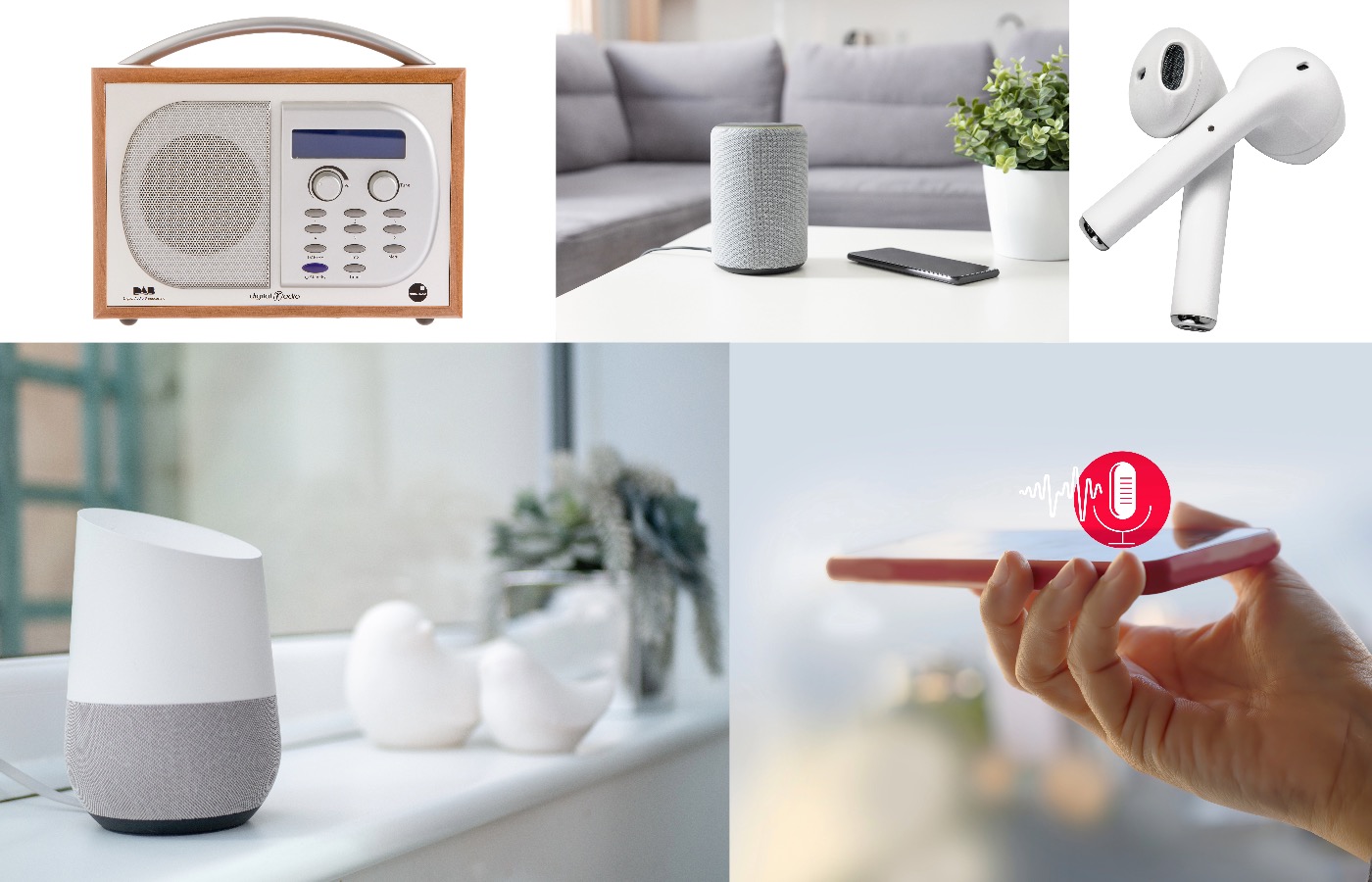An overview of UK radio
In this blog we’ll be talking about the different types of radio broadcasting and types of radio stations in the UK.
In the UK, radio broadcasts began in 1922 with the British Broadcasting Company, or BBC, in London. But fast forward a hundred years and whether you listen on FM, DAB, the internet or via smart speakers, the choice is endless. Without question, the UK has some of the best radio in the world.
Radio is still relevant. Despite the rise in social media and the emergence of the digital age, it remains one of the most powerful communication tools of the 21st century. Radio is a key part of our everyday lives. You might turn to it as a news source, entertainment, healthy debate or just ‘company’. Some would argue it is the original social media.
What Are the Different Types of Radio broadcasting?
People usually categorise radio depending on their use and function. The most used today are AM, FM, Internet, and DAB. Each of them uses a different technology or band. A radio band determines the wavelengths and frequency used and only applies to analogue radio.
This article will introduce each of the types of radio broadcasting that are commonly used in the UK. It will also give some tips on securing coverage on national and regional radio stations.
Technology leading the way
New technology has helped the radio industry evolve and increase in popularity. There’s been a huge increase in the types of radio broadcasting and the number of people downloading podcasts and streaming internet radio
Studio webcams and social media have changed the audience relationship with radio by making listeners feel more connected to the presenters. This type of media convergence is also achieved through the use of blogs and forums on radio websites.
Radio is available on more platforms than ever before, including:
- DAB (Digital Audio Broadcasting)
- FM Radio
- AM Radio
- LW (Long Wave)
- MW (Medium Radio)
- Freeview TV, Sky TV and Virgin TV
- Online
- On mobile phones via mobile apps
- On digital music players
What is the difference between AM, FM, DAB and internet radio?
Amplitude Modulation (AM) – key points:
- The first successful audio transmission was carried out in the mid-1870s and it’s the oldest form of radio broadcasting technology
- The radio wave is called a carrier wave, and the frequency and phase remain the same
- Has poor sound quality, but can transmit longer distance so in the UK it’s used by many types of radio stations, including talk, news and sports outlets like Radio 4
- The frequency range of AM radio varies from 535 to 1705 kHz
- More susceptible to noise and interference
Frequency Modulation (FM) – key points:
- Developed in 1930 by Edwin Armstrong, in the United States
- The radio wave is called a carrier wave, but the amplitude and phase remain the same
- Has higher bandwidth with better sound quality so music stations use this frequency, including Classic FM and Magic
- FM in particular remains highly valued by many listeners, especially those who are older, drive older cars or live in areas with limited DAB coverage
- The frequency range of FM is 88 to 108 MHz in the higher spectrum
- Less susceptible to noise
DAB – key points:
- Requires a broadcasting licence
- Broadcasting distance depends on how many multiplexes a radio station belongs to
- Multiple radio stations can be broadcast on one signal
- Has no interference
- Can transmit metadata like song names
Internet radio
- Does not require a broadcasting licence
- Can broadcast anywhere in the world
- Number of radio stations are not limited to any signal
- Has no interference
- Can transmit metadata like song names
Relevance of radio today

The first voice on the BBC – Arthur Burrows read the 6pm news bulletin on 14 November 1922
In the UK, radio broadcasts began in 1922 with the British Broadcasting Company, or BBC, in London – but fast forward a hundred years and whether you listen on FM, DAB, Internet or via Satellite the choice is endless, and the UK has some of the best radio in the world. We now have more types of radio broadcasting and radio stations than any point in history.
Radio is still relevant. Despite the rise in social media and the emergence of the digital age, it remains one of the most powerful communication tools of the 21st century. Radio is a key part of our everyday lives, whether it’s a news source, entertainment, healthy debate or just ‘company’ Some would argue it is the original social media.
Who’s listening?
In an increasingly’ digital’ world, radio is one of the few remaining mass media that can reach almost everyone and anywhere even in the car.
Around 90% of UK adults listen to radio every week. Latest RAJAR figures announced that 49.7 million adults or 89% of the adult (15+) UK population tuned in to their selected radio stations each week.

Commercial radio continues to attract more listeners than the BBC, reaching 38.1 million people compared with 33 million listeners hearing live BBC radio each week. The top three commercial brands being Heart, Capital and Smooth.
The attraction of radio
There are many types of radio stations and commercial radio continues to attract more listeners than the BBC, reaching 38.1 million people compared with 33 million listeners hearing live BBC radio each week. The top three commercial brands being Heart, Capital and Smooth.
But why do we love radio? Well for one thing, it’s free! And you’ll always find a station that appeals to your specific needs, talk, classical music, rock, pop or a bit of nostalgia. Over forties for BBC regional radio, under 25’s for Radio 1 and Heart somewhere in the middle with 25-44 year-olds.
A nice, clearly segmented audience, organic reach and if required a locally targeted audience, it’s all possible when it comes to radio PR and this is why brands and businesses still consider radio as one of their top marketing strategies.
But massive change is afoot with the Digital Switch.
Digital Switch
It’s on a scale similar to the digital TV switch in 2012 and radio is experiencing the same dramatic change from analogue, by which we mean FM and AM, to digital.
To listen to Digital Audio Broadcast (DAB), which will be the main broadcast platform for national stations, you won’t be able to listen via your old FM/ AM radio. We anticipate FM will be switched off in the next decade or so, so it will still be around for a while yet: there is currently no fixed date to announce a switchover to digital radio. The government has set certain criteria before the switchover can even be scheduled with industry experts saying FM might still be used for local and community radio stations.
The switch will happen when:
- Digital listening reaches 50% of all radio listening. This includes listening through TV and the internet as well as DAB.
- National DAB coverage is comparable to FM.
What is digital radio?
‘Digital radio’ is a blanket term to include broadcasts on the internet and listening to the radio on a TV, smart speaker as well as on a DAB radio.
Internet radio offers many more types of radio stations than DAB, including local radio stations that aren’t in the area you’re in and international radio stations. This means that you can listen to it on your smartphone, tablet or computer.
The benefits of DAB radio
The obvious one is more radio stations. The FM spectrum is crowded. Digital platforms provide space for even more stations which, from a listener perspective, should mean a greater choice of stations to listen to.
Currently, and according to data from RAJAR in the first quarter of 2023, the share of radio listening is split like this:
- 67% – Digital (DAB, TV, online or app)
- 32% – Analogue
National v’s regional radio for PR campaigns
Ask a client what makes a successful campaign and national radio is likely to be at the top of their wish list. But if budgets and/or logistics are limited, and you have to pick one, which is better: national or regional radio? In an ideal world you’d have both, but if you have to choose, you need to consider the story, audience and goals of the client before deciding which is the best fit for your campaign.
A good way to think of a local radio station is as filler; in between all the big-hitters, it’s good to have a selection of smaller stations in patches that the bigger stations might not reach. Local radio ensures good coverage nationally, meaning your PR campaign will reach people of all ages and demographics all over the UK, not just the core BBC audience for example.
Who to target
If your campaign is based on spreading information to the masses using spokespeople and you have regional statistics, then local radio will be the way to go.
Certain stories fit perfectly into the local radio programmes. If your PR campaign has a regional theme to it, including spokespeople and case studies if possible, then broadcasters will love it.
A case study

To give an example, we recently worked with Slimming World to promote a story that it’s not just what you eat, commitment and determination also play a part when you’re embarking on a weight-loss journey. The company worked with the University of Lincoln whose research showed that dieters who are supported by a group of people lose significantly more weight than those who go it alone. It was the UK’s first study into the relationship between weight loss and mental toughness.
An abundance of regional case studies around the UK was the key and we ensured they were fully briefed about Slimming World’s key messages, as well as what they should expect from the journalists interviewing them. Most had not had experience of being interviewed for broadcast before.
The quality of research, case studies and how there were presented resulted in strong interest from quality broadcasters, with a combined reach of 36.33 million listeners. There were 18 interviews in total, including six BBC radio stations and the TV channel GB News.
Spokespeople
If your campaign features a big-name spokesperson, local broadcasters won’t be able to book in quickly enough. Generally speaking, the listenership of these stations is smaller than many national broadcasters, their guests are often less impressive and their presenters will only be ‘famous’ within the area in which they broadcast. When they get a call from us offering up a household name, they see this as a chance to make their station seem more professional to their listeners. It also makes the audience pay more attention when their local station is able to host a recognised voice on air.
Branding
If your campaign features a big-name brand, and ideally a big-name spokesperson, local broadcasters won’t be able to book in quickly enough. Generally speaking, the listenership of these stations is smaller than many national broadcasters, their guests are often less impressive and their presenters will only be ‘famous’ within the area in which they broadcast. When they get a call from us offering up a household name, they see this as a chance to make their station seem more professional to their listeners. It also makes the audience pay more attention as they won’t be used to their station of choice having such a recognised voice on air.
On the subject of branding, one major challenge when dealing with BBC regional stations is that they are reluctant to allow brand mentions. Typical you will only be officially allowed one brand credit. Spokespeople may try to squeeze more in, against the will of the presenter and producer, but if you want to be a repeat guest you need to abide to the rules.
Local radio audiences tend to be people who are proud of the area they live in and RAJAR statistics show that these stations have good numbers in terms of hours listened. There has been much talk of the demise of BBC local radio with the network in England showing some ups and downs, but we’d argue that while overall reach might not be hugely impressive, the dedication and attentiveness of the listener is likely to be higher, which is perfect for PR campaigns.
Larger commercial stations, big enough to have their audiences measured by RAJAR, have to adhere to Ofcom standards. Smaller local community stations, however, we find, tend to be more lenient when it comes to brand mentions.
The best way to weave in a brand mention is to do it naturally. That means allowing the interview to get up to speed, at which point you can drop in some figures from the research, commissioned by X brand….and so on.
National Radio
Radio is consistently ranked as the most trusted source of news and information available to audiences in the UK and Europe. A recent survey of listeners(1) found that 77% see radio as a trusted source of national news. This is more than any other media, with social media the least trusted.
The same report also found that national commercial radio plays a particularly strong role in providing reliable news and information to audiences that are much less likely to access news on other media. This includes more than 12 million people for whom radio is their principle source of news updates at key points throughout the day and during emergencies.
Programming is around 3-4 minutes for a national radio show. National interviews are live so it gives the spokesperson a great opportunity to ensure their key messages are communicated.
National radio enjoys large audiences meaning coverage can really have a positive impact on a campaign. Here are a few examples:
BBC Radio 5 Breakfast, 1.75 million
Times Radio 703,000
Sky News Radio, 3 million
Radio 4’s You and Yours, 1.2 million
LBC Radio, 1.2 million
Talk Radio, 650,000
BBC Asian Network, 500,000
National interviews are live so it gives the spokesperson a great opportunity to ensure their key messages are communicated
National radio audiences
Choosing which stations you approach is a critical stage in the process of securing coverage on national radio. Demographics are important and commercial radio in particular consists of a wide range of national stations with a variety of content and playlists attracting different types of audiences. RAJAR data helps us analyse which stations are best for reaching a specific target demographic.
BBC Radio 4 for instance is a station for anyone interested in intelligent speech with a listener profile of 45+ . Its schedule is packed with insightful journalism, including Radio 4 Today programme which sets the news agenda for UK media and is the highest-rated programme on Radio 4. Whilst it is the Holy Grail for some brands, Today is an extremely challenging programme to secure coverage on. A celebrity promoting a lifestyle product is never going to be of interest; but they do like thoughtful academic research, economic set pieces like interest rates and inflation figures and regularly cover consumer topics like the cost of living crisis. Spokespeople should be prepared to be grilled and the show can be controversial.
In contrast, the Heart network is a feel good music station, their core audience aged between 25-44. They want a celebrity spokesperson, and as long as they talk about other subjects too, are reception to allowing one brand mention. Heart Breakfast in particular loves a show biz chat – it’s main focus is celebrities, showbiz stories, soap spoilers, and feel good radio.
Other nationals, sit in between. TalkRadio, Times Radio and LBC, all talk broadcasters, feature regularly in our radio day schedules. Standards are high and your campaign needs to be robust to get on-air.
Tips for securing coverage on national radio
There are some key elements which help us consistently secure great broadcast coverage and maximise the chances of getting onto UK national radio. They include: What’s the top line? All the national journalists want to know what the story is in one simple sentence. If you don’t know what it is, then you’ve got no chance. Why does the story matter – and how is it relevant to the audience? What’s new about it?
Younger audience
The Heart Network in contrast is a feel good music station their core audience aged between 25-44 and according to the station have a spark about them. They are much more receptive to allowing 1 brand mention in a question asking the celebrity brand ambassador what they’re up to. They love a show biz chat particularly Heart Breakfast with Amanda Holden and Jamie Theakston the show is all about celebrities, showbiz stories, soap spoilers, and feel good radio.
Understand the programme
When targeting national broadcast journalists, it is important to know which audiences they are trying to reach. Different programmes on different types of radio stations and have very different audiences. We tailor ours specifically and wouldn’t for example target a consumer launch with a celebrity to Times Radio early breakfast but 100% would to Talk TV/ Radio, Vanessa Feltz Drive.
Timing
Journalists are under constant pressure to fill programmes and it is important to understand the planning processes for different national outlets. The first port of call is the planning desk and it is important to know for example when their big weekly meetings take place. Broadcast journalists like lists and the earlier on in the process that you get your story on a list, the better. We recommend at least full week to sell in to national radio stations to ensure you’ve made the weekly meeting.
It should go without saying that you should never pitch a story to a programme just before or when they are on-air.
Need help getting on-air?
Radio is still one of the most significant mass media in the UK. Radio stations need content, interesting stories, features, competitions and promotions. Shout! Communications guarantees a minimum of 10-12 opportunities across BBC and commercial, national and regional radio stations with a weekly reach of at least a million listeners. We expect 1-2 of these at least to be nationals. Of course, we may get much more and frequently do.
We give our guarantee confidently. Our media consultants are skilled at creating radio PR campaigns because many of them have worked as broadcast journalists themselves. We have the contacts and the know-how to get your story broadcast.
Want to chat through your next campaign? Call 020 7240 7373 or email hello@shoutcommunications.co.uk.
1Beyond the Bubble (Radiocentre, Dec 2020)




